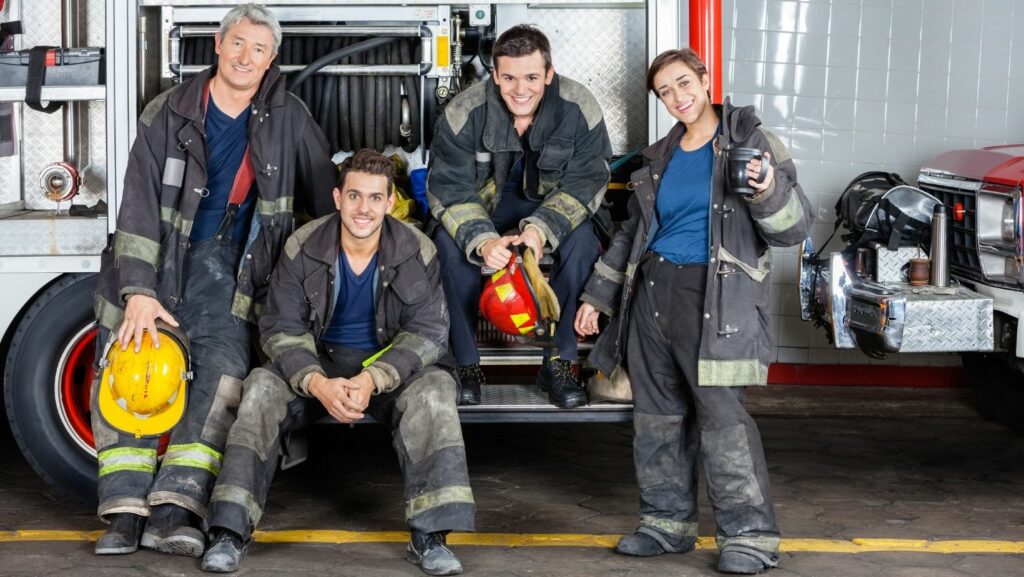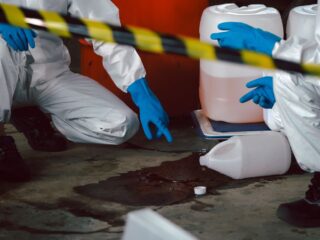
We’ve all seen the footage. A river running through the middle of a city, people wading in dirty water up to their knees. A town was ripped apart by a tornado, with pieces of people’s homes scattered to the wind. Two noble towers crumble into ash and dust after an act of pure violence and hate.
And then there are those Mr. Fred Rogers ( and his mother) dubbed “The Helpers.” “When I was a boy and I would see scary things in the news,” Mr. Rogers told us, “my mother would say to me, ‘Look for the helpers. You will always find people who are helping.’” In other words, those brave souls facing fire and flood to help those in need.
Of course, first responders do more than help during natural disasters. They are the first on the scene when someone’s home catches fire, or a distressed bystander reports a vehicle accident. They are the first on the scene during emergencies, medical crises, natural disasters, and more.
Mr. Rogers once comforted a generation of children by telling them to “Look for the helpers” in dark times. But many adults and growing adolescents want to know how they can become the helper.
The Qualities of a First Responder
There is more to being a first responder than the essential medical skills and technical know-how. Being a first responder requires a strong sense of compassion and mental fortitude. Someone who can face a crisis and take control, do what needs to be done while remaining kind to civilians in the midst. Empathy and connection go a long way during disasters, and first responders often need to provide comfort during dire scenarios.
Compassion is essential, as first responders often encounter people who are scared, injured, or traumatized. Victims who have sustained gruesome injuries and their panicked loved ones. Patients in medical distress may start to hyperventilate from the stress. People are experiencing mental health crises. First responders should be well-versed in de-escalation.
First responders need to be level-headed during intense situations. They must make quick decisions and react promptly. Many also have to assess risks and solve problems on the move.
Required Training and Certifications
Becoming a first responder is no small feat. It requires rigorous physical training and in-depth education. To be a first responder, you must be able to run up sharp inclines while dressed in the full 45 pounds of firefighter gear. You must be able to restrain a suspect who is attempting to flee or chase those who flee on foot. You must be able to safely, carefully, gently lift the wounded and carry them to safety. You need to be able to remove anything in your way, handle heavy equipment, and work in dangerous terrain. You can’t talk a victim down from a panic attack if you are out of breath.
Physical training is most important for firefighters, but it can also greatly assist police officers, EMTs, and others in their tasks.
Next is education. Most career fields that have first responder positions require at least a high school degree, with many requiring college. Then you have law enforcement, with their police academy program that covers various aspects of law enforcement. Next are basic certifications. All first responders should attain basic life support certification. These courses verify that you know individual and team approaches for basic first aid, CPR, and more. EMTs must obtain their National Registry of Emergency Medical Technicians certification. Many first responders also require HAZMAT training.
The specific requirements for training will be based on your career field. Those who know what field they want to enter can find a mentor or advisor to point them in the right direction to get started.
Facing the Challenges
While the role of first responder is honorable, it is also incredibly daunting. It is draining. It is stressful. First responders handle a lot of stress and still find the compassion and dedication to serve their community.

The physical demands can be extreme; strength and stamina are necessary, and many first responders must stay alert for long hours. Work environments can turn high-stress with a single phone call or dispatch, and first responders must handle witnessing human suffering firsthand. The emotional and mental strain can be excruciating; first responders must have access to strong coping mechanisms and support systems.
Then there is the danger itself—perilous situations like collapsing structures, violent people, and hazardous substances. First responders must learn how to balance their own safety with helping others.
The Rewards of Being a First Responder
For all the challenges of being a first responder, the career field can be incredibly rewarding. Emergency personnel are able to make a positive difference in people’s lives. These heroes save lives, offer comfort, and give hope.
There is also a deep sense of camaraderie and teamwork among the community of first responders. Emergency personnel from all fields work closely together during intense situations to overcome obstacles and achieve their missions of hope. The bonds they form with each other are lifelong, a shared understanding of challenges and victories.












